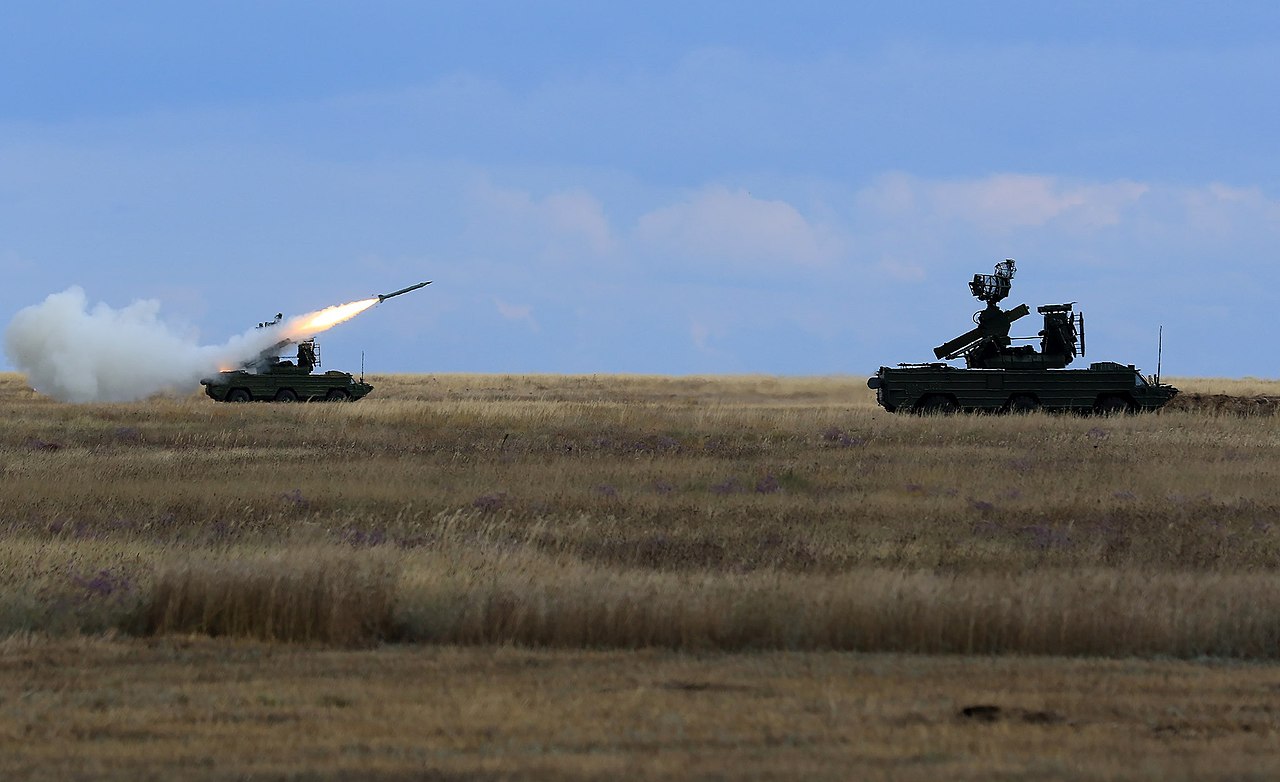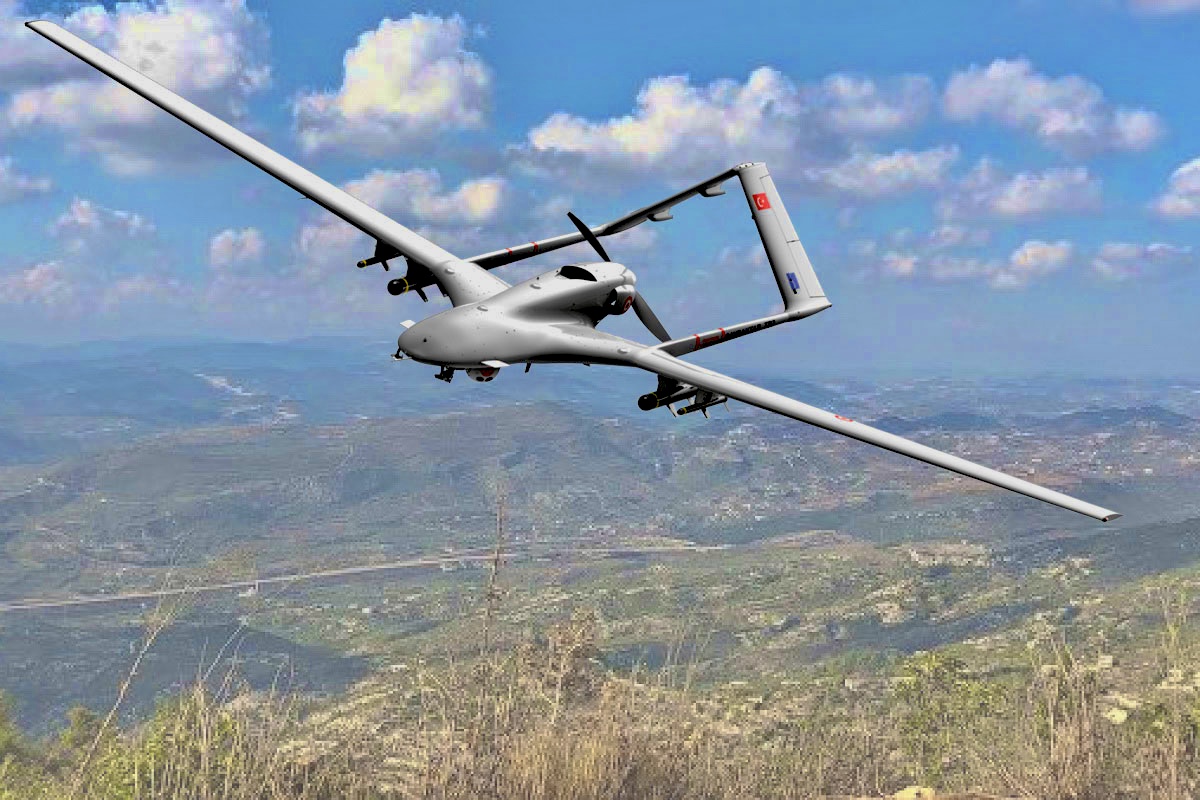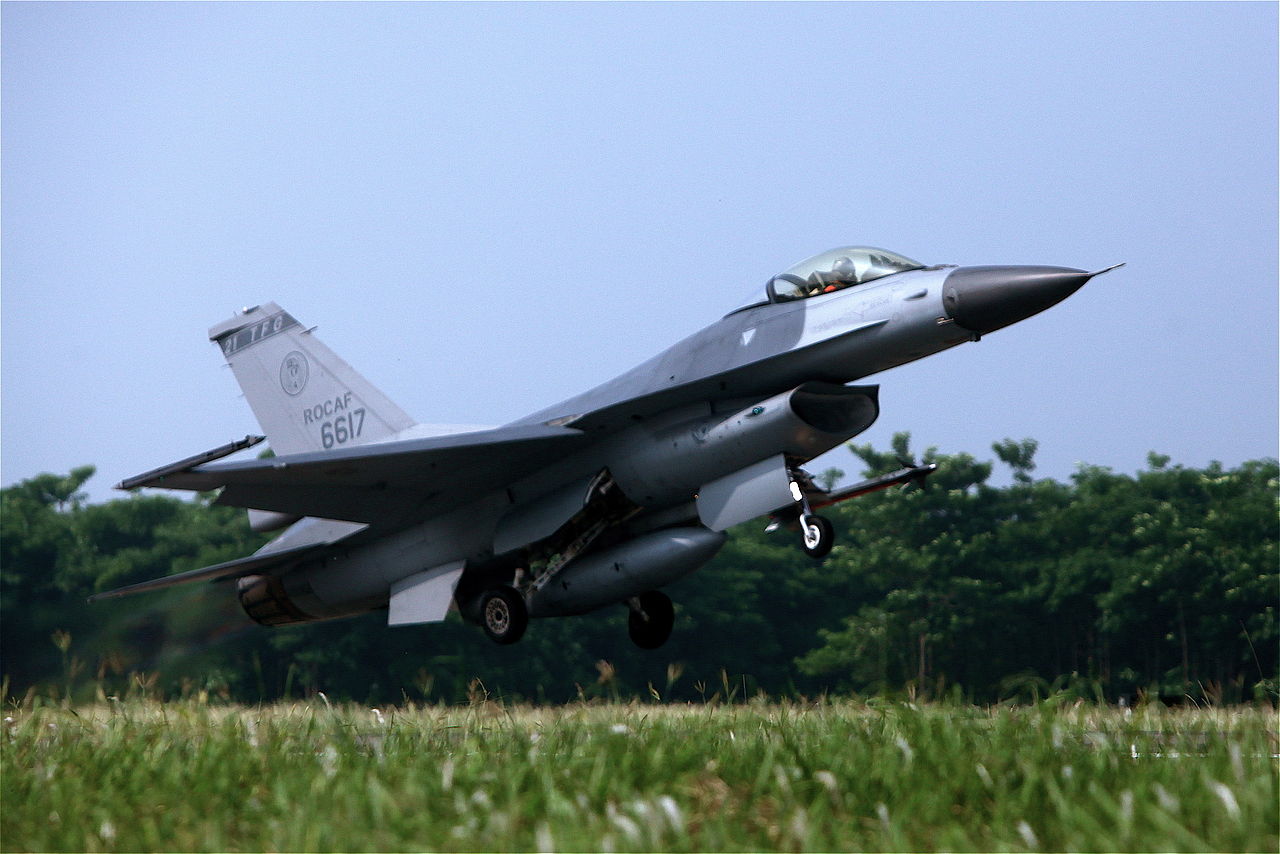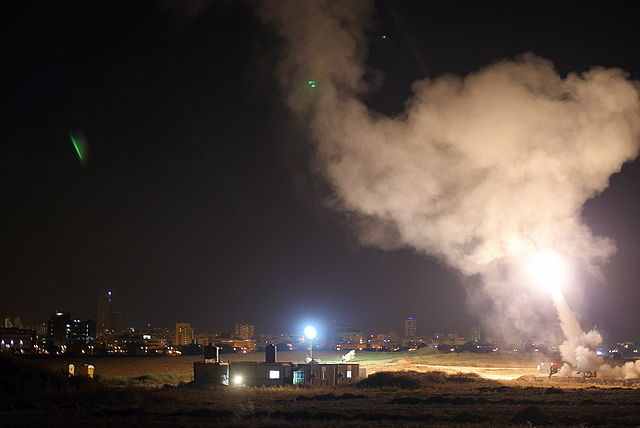The conflict between Russia and Ukraine has challenged traditional notions of air superiority, as Ukraine successfully employed an air denial strategy against a larger adversary. As Taiwan faces its own security challenges, it can draw valuable lessons from Ukraine’s experience to enhance its defense capabilities. Understanding these lessons is critical to Taiwan’s deterrence and maintaining a strategic advantage in the face of potential aggression. From rethinking air defense strategy to addressing ammunition consumption, this article examines how Taiwan can draw on Ukraine’s experience to strengthen its own air warfare capabilities.
The dominance of Air Denial
At the beginning of the conflict between Russia and Ukraine, the Russian military was expected to quickly gain air superiority over Ukraine due to its huge quantitative and qualitative advantage in air power. [1] More than a year later, however, it is clear that this is not the case. Despite multiple attempts by the Russian air force to establish dominance, it has only been able to achieve localized and temporary air superiority. [2] This observation has led some scholars to argue that we are witnessing the emergence of a new era of air power. One that will be dominated by the denial of the air, even by a significantly smaller and less equipped force. [1][3]

The cornerstone of Ukraine’s successful air denial strategy has been its ability to successfully counter enemy air threats. Traditionally, fixed-wing aircraft have played the primary role in air defense. However, due to the Russian advantage in the air, Ukraine’s approach has been to use the mobility and dispersion of its anti-air systems to its advantage. [3][4][5] This, combined with the inability of the Russian air force to successfully conduct SEAD/DEAD missions, has allowed them to withstand the initial attempt at a disarming strike and later to force the Russian air force out of the skies using „shoot-and-scoot“ tactics of firing and quickly moving away. [4][6] To accomplish this, Ukraine has deployed a strong force of various short-, medium-, and long-range air defense systems. This layered defense system has proven effective in countering the Russian Air Force’s attempts to establish dominance.
Ukraine’s success in air denial has important implications for future military conflicts. It demonstrates that air superiority might not be a foregone conclusion any longer, even for a military force with overwhelming airpower capabilities. And at the same time, smaller and less well-equipped powers can employ innovative and effective air defense strategies to deny enemy air superiority.
The increasing role of drones and loitering munition
While Ukraine had successfully employed the strategy of air denial to both fighters and bombers, the conflict has, according to Bremer and Grieco, highlighted the importance of a new operational space in warfare: the air littoral. [1] This low-level environment between the ground and the blue skies has become a crucial space for military operations. [1][2] It provides a relatively low-cost precision strike capability that can be employed by both commercial and military drones. [4] Ukraine was quick to recognize the potential of this space and was able to dominate it with its drones and loitering munitions, such as the famous Bayraktar TB2. [4][7] This proved invaluable in supporting Ukrainian ground forces against the much larger Russian army. [7] However, the advantage was short-lived as Moscow quickly learned how to counter the TB2 drones and later began operating in this space, employing the Iranian Shahed loitering munition. [6]

The competition for control of the air littoral has highlighted the importance of rethinking layered air defenses to successfully prevent adversaries from operating in this space. [5] With both sides having a strong presence in this new battlespace and given the potential cost savings and precision capabilities offered by the air littoral, it is likely that this space will continue to play an increasingly important role in modern warfare, thus making the ability to defend it a major concern for militaries and politicians around the world.
The importance of ammunition stockpile
When discussing warfare, much attention is typically devoted to arms procurement, emerging technologies, and the importance of training. However, the ongoing conflict in Ukraine has served as a stark reminder that even with good training and advanced technology, weapons are useless without an adequate supply of ammunition.
Since the conflict started, the Ukrainian military has struggled to keep up with the demand for ammunition to match the Russian stockpile. This shortage has been particularly evident in the artillery. It has often been reported that Ukrainian guns are unable to fire as many shells as needed due to the need to conserve ammunition. [2] Recent leaks from the Pentagon reveal that the Ukrainian military has also struggled to maintain an adequate supply of ammunition for its anti-aircraft systems. [8]
This is of particular concern because it may force the Ukrainian military to prioritize which targets to engage and which to let through. [9] Such a situation could lead to an increase in both civilian and military casualties from Russian missile and drone strikes. [8] It could also pave the way for potential air penetration by Russian aircraft and the possible end of the hitherto successful air denial which can be considered one of the main reasons for Ukraine’s success in the war. [6]
In addition, the cost of surface-to-air missiles can often exceed the value of the targets they are intended to intercept, such as drones or loitering munitions. [9][10] These further strain the military’s already limited resources.
This conflict underscores the critical importance of maintaining sufficient ammunition stockpiles to sustain military operations, particularly in protracted conflicts. The consequences of failing to do so can be dire, emphasizing the importance of logistics and supply chain management in modern warfare.
Lessons for Taiwan from the Russo-Ukrainian War
Air Denial Salvation
The challenge of achieving air superiority is a concern for major powers that rely heavily on their air forces, notably the United States. However, this predicament could serve as a strategic advantage for smaller nations facing threats from their larger neighbors, provided they successfully adopt an air denial strategy.
Taiwan is an example of a nation that could benefit significantly from such a strategy. Unlike Ukraine, where Russia made territorial gains despite Ukrainian air denial efforts, Taiwan’s geography as an island nation means that “without air control… China would be unable to execute almost any military plan against Taiwan.” [11] Despite this advantage, Taiwan’s military currently lacks a focus on air denial and continues to develop under the assumption of potential air supremacy. [12][13] The Taiwanese high command continues to view its fighter fleet as the primary deterrent against a potential Chinese attack. [13] Consequently, it is investing heavily in maintaining its 321 fighters and expanding the fleet, spending billions of dollars to upgrade existing F-16s and procuring 66 additional fighters. [14][15]

The fighters in Ukraine play an important role in maintaining air denial. The country’s vast geography allows them to be deployed to multiple airfields, making targeting difficult for the Russians. [2] Taiwan’s geographical situation, however, is quite different. In the event of a conflict, it is even plausible that Taiwan’s air force might be unable to take off in the face of a barrage of Chinese missiles. [12]
As mentioned earlier, the Ukrainian strategy of mobility and dispersion was critical to achieving air denial by surviving Russian attempts to suppress enemy air defense missions. However, available sources indicate that the Taiwanese high command employs its air defense systems primarily to protect fixed assets such as air bases, command and control facilities, and critical infrastructure. [12][13] Such a strategy puts these systems at greater risk of being overwhelmed and destroyed in the event of a Chinese missile attack. This approach has been criticized for several years. Based on recent lessons, Taiwan should shift its focus toward the air denial strategy of dispersion and concealment to increase its chances of successfully deterring potential Chinese military action.
Patching the Gaps
At the same time, China has advanced capabilities in the air littoral. Beijing can disrupt Taipei’s operations by using, for example, Israel-made radar-homing Harpy loitering munitions, which can destroy the radars of Taiwan’s air defense systems. [12] However, in terms of air littoral defenses, Taipei is not lagging behind, as it currently deploys a significant number of domestically developed anti-drone radars. [16]
Nonetheless, to successfully deter potential Beijing’s aggression or counter the Chinese air force in a conflict scenario, Taiwan needs a comprehensive, integrated air defense system with layered capabilities. [5][13][17] Despite proactive steps in the air littoral domain, Taiwan’s system is lacking in this regard. [12] Taiwan has a substantial inventory of modern, mobile, long-range air defense systems capable of engaging both aircraft and missiles. However, recent research indicates that effective employment of these systems requires a complementary force of medium- and short-range air defense systems. [13] Even if Taiwan adopts an air denial strategy, as argued earlier, the existing force of anti-aircraft systems is unable to execute proper „shoot-and-scoot“ tactics due to the time required to relocate the systems after firing. [13] To address this, a significant force of mobile medium- and short-range air defense systems is needed to support and protect the long-range systems from the hostile suppression of enemy air defense missions. [13][17] Therefore, Taiwan should thoroughly reassess the composition of its current anti-air force and make substantial adjustments to ensure its effectiveness in future conflicts.
Addressing Ammunition Shortages
The issue of ammunition shortages, as seen in the Ukraine conflict, also poses a significant challenge to Taiwan’s defense. The cornerstone of Taipei’s deterrence should be to impose costs on any potential Chinese military action that would be unsustainable for Beijing. For this strategy to be effective, Taiwan must have an ample supply of ammunition. The problem of ammunition shortages has long been a topic of discussion regarding Taiwan’s defense. In 2016, researchers at the RAND Corporation pointed out that Taipei has fewer than 500 PAC-3 ballistic missile interceptors, compared to over 1,000 Chinese short-range ballistic missiles. [13] They concluded that to successfully counter any Beijing military action, Taiwan would need to acquire an additional 900 PAC-3 interceptors, 2400 anti-aircraft missiles, and new anti-aircraft systems capable of launching these missiles. [13] Implementing these recommended acquisitions would provide Taiwan with formidable asymmetric capabilities. However, such acquisitions would require significant changes in Taipei’s acquisition strategies and a significant increase or restructuring of defense budget spending.

For example, in 2017, Adm. Lee Hsi-min, the new ROC Chief of the General Staff, responded to these and other similar recommendations by introducing the Overall Defense Concept. [18] This document presented a holistic and integrated approach aimed at establishing a new framework for Taiwan’s deterrence based on asymmetric capabilities. The concept won praise and recognition from U.S. strategists and academics. [19] Unfortunately, it did not impress the ROC Ministry of National Defense and was ultimately abandoned when Admiral Lee retired. [19] It should be noted that Taiwan is acquiring new missiles, but in insufficient quantities. As evidenced by Taipei’s purported plan to increase its inventory of PAC-3 interceptors to 650 by 2027, it falls short of the required numbers. [20]
As an island nation, Taiwan cannot rely on the supply of ammunition during a potential conflict, as demonstrated by the Ukrainian example, due to the risk of naval and air blockades and the geographical distance from potential suppliers. Therefore, Taipei should learn from the Ukrainian conflict and build up a substantial stockpile of ammunition as well as strengthen its domestic ammunition industrial base. Although this may seem like an expensive or unnecessary measure, it could be the difference between victory and defeat in the event of a conflict.
Conclusion
In conclusion, the air war over Ukraine provides valuable lessons for Taiwan’s defense capabilities. Ukraine’s successful air denial strategy against a larger adversary challenges traditional notions of air superiority. Taiwan should draw from this experience to rethink its air defense strategy, focusing on mobility and dispersion to counter potential threats. Additionally, the conflict highlighted the importance of the air littoral, where drones and loitering munitions play a crucial role. Taiwan must acquire both offensive and defensive capabilities in this domain if it is to be prepared for a future conflict. As the conflict in Ukraine has shown, even a smaller nation with a comparatively weaker air force can effectively exploit the space between the ground and the sky to a considerable extent. Furthermore, the ammunition shortages faced by Ukraine emphasize the criticality of maintaining sufficient ammunition stocks for sustained military operations. Taiwan needs to prioritize acquiring and stockpiling ammunition to ensure its ability to engage potential threats.
Taiwan, like Ukraine, is facing a stronger and larger adversary and can use these experiences to improve its defense capabilities and maintain a strategic advantage in the face of potential aggression.
Article reviewed by: Tomáš Zwiefelhofer, Kristýna Drmotová
Sources
- Bremer, M. K., & Grieco, K. A. (2022, August 30). Air denial: The dangerous illusion of decisive air superiority. Atlantic Council. Retrieved from https://www.atlanticcouncil.org/content-series/airpower-after-ukraine/air-denial-the-dangerous-illusion-of-decisive-air-superiority/
- Pappalardo, D. (2022, August 30). Air superiority in Ukraine: Be sensitive to Diagoras’s problem. Atlantic Council. Retrieved from https://www.atlanticcouncil.org/content-series/airpower-after-ukraine/air-superiority-in-ukraine-be-sensitive-to-diagorass-problem/
- Bremer, M. K. & Grieco, K. A. (2022, June 15). In Denial About Denial: Why Ukraine’s Air Success Should Worry the West. War on the Rocks. Retrieved from https://warontherocks.com/2022/06/in-denial-about-denial-why-ukraines-air-success-should-worry-the-west/
- Wetzel, T. (2022, August 30). Ukraine air war examined: A glimpse at the future of air warfare. Atlantic Council. Retrieved from https://www.atlanticcouncil.org/content-series/airpower-after-ukraine/ukraine-air-war-examined-a-glimpse-at-the-future-of-air-warfare/
- Stefanovic, M., et al. (2023, February 9). The Somme In the Sky: Lessons From the Russo-Ukrainian Air War. War on the Rocks. Retrieved from https://warontherocks.com/2023/02/the-somme-in-the-sky-lessons-from-the-russo-ukrainian-air-war/
- Bronk, J., Reynolds, N., & Watling, J. (2022, November 7). The Russian Air War and Ukrainian Requirements for Air Defence. RUSI. Retrieved from https://rusi.org/explore-our-research/publications/special-resources/russian-air-war-and-ukrainian-requirements-air-defence
- Kreuzer, M. P. (2022, August 30). AirLand redux? Early lessons from Ukraine. Atlantic Council. Retrieved from https://www.atlanticcouncil.org/content-series/airpower-after-ukraine/airland-redux-early-lessons-from-ukraine/
- Mansoor, S. (2023, April 13). Why Experts Are Growing Alarmed About Ukraine’s Air Defenses. Time. Retrieved from https://time.com/6271538/ukraine-air-defense-shortages-russia/
- Clarke, M. (2023, May 1). Expert explains why Ukraine may have to ‚start letting missiles through‘. Sky News. Retrieved from https://news.sky.com/story/ukraine-war-latest-fight-between-ukrainian-and-russian-officials-over-flag-can-a-squadron-of-eagle-interceptors-protect-kremlin-12541713?postid=5853028#liveblog-body
- Bigg, M. M., et al. (2023, January 3). Defending against Russian drones is expensive, but Ukraine sees the cost as worth it. The New York Times. Retrieved from https://www.nytimes.com/live/2023/01/04/world/russia-ukraine-news/defending-against-russian-drones-is-expensive-but-ukraine-sees-the-cost-as-worth-it
- Halem, H., & Freymann, E. (2022, April 7). Ukraine Shows Why Taiwan Needs More Air Defense. War on the Rock. Retrieved from https://warontherocks.com/2022/04/ukraine-shows-why-taiwan-needs-more-air-defense/
- Shlapak, D. A., et al. (2009). A Question of Balance: Political Context and Military Aspects of the China-Taiwan Dispute. RAND Corporation. Retrieved from https://www.rand.org/pubs/monographs/MG888.html
- Lostumbo, M. J., et al. (2016). Air Defense Options for Taiwan: An Assessment of Relative Costs and Operational Benefits. RAND Corporation. Retrieved from https://www.rand.org/pubs/research_reports/RR1051.html
- The International Institute for Strategic Studies (2023). The Military Balance 2023. Routledge. Retrieved from https://www.taylorfrancis.com/books/mono/10.4324/9781003400226/military-balance-2023-international-institute-strategic-studies-iiss
- Yeo, M. (2021, November 19). Taiwan commissions first upgraded F-16 fighter wing. Defense News. Retrieved from https://www.defensenews.com/global/asia-pacific/2021/11/19/taiwan-brings-upgraded-f-16s-into-service/
- Gosselin-Malo, E. (2023, February 24). Anti-drone radars ready for ‘mass deployment’ in Taiwan, says vendor. Defense News. Retrieved from https://www.defensenews.com/newsletters/unmanned-systems/2023/02/24/anti-drone-radars-ready-for-mass-deployment-in-taiwan-says-vendor/
- Hunzeker, M. A., et al. (2018, November). A Question of Time: Enhancing Taiwan’s Conventional Deterrence Posture. Center for Security Policy Studies at George Mason University. Retrieved from https://csps.gmu.edu/publications/a-question-of-time/
- Lee, H. and Lee, E. (2020, November 3). Taiwan’s Overall Defense Concept, Explained. The Diplomat. Retrieved from https://thediplomat.com/2020/11/taiwans-overall-defense-concept-explained/
- Hunzeker, M. A. (2021, November 18). Taiwan’s Defense Plans Are Going Off the Rails. War on the Rocks. Retrieved from https://warontherocks.com/2021/11/taiwans-defense-plans-are-going-off-the-rails/
- Everington, K. (2020, December 7). Taiwan reportedly buying 300 more Patriot missiles from US. Taiwan News. Retrieved from https://www.taiwannews.com.tw/en/news/4071599





